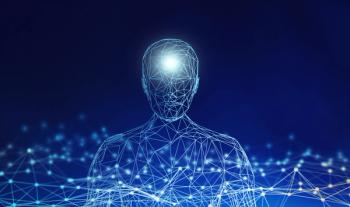
- Vol 32 No 3
- Volume 32
- Issue 3
Harnessing Social Media and Mobile Apps for Mental Health
What if we were able to harness the immense power of our digital connections to create tools that can potentially make our lives happier and healthier?
[[{"type":"media","view_mode":"media_crop","fid":"33185","attributes":{"alt":"Social Media and Mobile Apps for Mental Health","class":"media-image media-image-right","height":"120","id":"media_crop_1184532296321","media_crop_h":"0","media_crop_image_style":"-1","media_crop_instance":"3494","media_crop_rotate":"0","media_crop_scale_h":"0","media_crop_scale_w":"0","media_crop_w":"0","media_crop_x":"0","media_crop_y":"0","style":"float: right;","title":" ","typeof":"foaf:Image","width":"164"}}]]It is nearly impossible to walk down the street, ride the subway, go to a coffee shop, or even have family time at home without being surrounded by people deeply engrossed in the digital worlds of their smartphones. Being digitally wired has become a large part of our everyday lives. Whether we engage in social media, listen to music, watch videos, text with friends, or read the news, there is no doubt that many of us are socially dependent on these devices. In fact, research has shown that not only do we have feelings of anxiety when separated from our smartphones, but we also have negative cognitive and physiological responses to that stress.1 For better or worse, our inseparability from our smartphones will continue to deepen as the technological capabilities of these devices expand and evolve.
But what if we were able to harness the immense power of our digital connections to create tools that can potentially make our lives happier and healthier? That is exactly what is in development.
The growth of health and fitness smartphone apps has been exponential. Research by Flurry Analytics found that in 2013, the overall mobile app industry grew 115% in terms of average daily use.2 In the first half of 2014, health and fitness apps specifically saw a 62% increase in use, an 87% faster growth than the rest of the mobile app industry, which is itself growing at an exponential rate. There are over 6000 health and fitness mobile apps available, with features such as activity monitoring, food diaries, and calorie counting.2
More recently, apps are being developed specifically to monitor behavioral health patterns. The use of smartphone technology allows for collection of sensor data of an individual’s behavior to identify behavioral trends. For instance, Ginger.io uses sensor data as well as self- reported information collected through the phone to help mental health professionals identify problematic behaviors that may indicate the need for additional support.3
The app can monitor movement and communication patterns to determine whether someone has been isolating from others, decreasing activity, or having changes in mood, all of which could be indicative of depression. In a series of studies, research from the MIT Media Lab supports the use of this type of data collection and analysis by demonstrating relationships between mood, sleep, and sociability and showing how these data can be collected through smartphone sensors to help monitor symptoms of depression.4,5
Mental health professionals using the Ginger.io app can invite patients to install the app on their smartphones. The app will monitor and analyze both the patient’s sensor and self-report data. Whether the patient has a low score on a mood survey or a concerning change in behavior patterns, Ginger.io will notify the mental health professional when an intervention may be warranted. For instance, let’s say a patient has not been sleeping well and decides to stay home from work for several days. The patient’s decreased mobility triggers an alert to his mental health professional that the patient’s mood is declining, based on analytics of a population model that shows that mobility is inversely proportional to mood. The mental health professional can then reach out to the patient via phone to check in and provide appropriate support.
The Ginger.io app is currently used by 30 medical centers, including Kaiser Permanente and the University of California, San Francisco. Research and development of other apps are also in progress, with a $2.42 million grant from the NIH given to researchers at the Harvard School of Public Health to develop an app that will analyze factors such as unlocking and locking phones to determine sleep patterns.6
The benefit of using smartphone apps to monitor behavior includes the nature of the continuous, passive collection of data. Not relying completely on self-report will lead to more accuracy of information. Also, using this already ubiquitous device for data collection will not serve as an inconvenience to the user. Physicians will have the benefit of collecting real-time information so they may efficiently serve their patients in need.
However, some patients and health care professionals have expressed concerns about privacy information, questioning how this information can be used in the future by health insurance providers. Furthermore, unless the algorithms for the notification of health care professionals have an ideal sensitivity and specificity, physicians could potentially receive a number of false-positive notifications, ultimately leading to increased workload and costs. Although the technology has great potential to identify those at highest risk while providing more accurate and comprehensive patient care, concerns about privacy as well as effects on workload remain to be seen.
Surveillance on personal smartphones is not the only technology being used to collect data on behavioral health. Infodemiology is a new field of study in which Internet and social media platforms are used to explore distribution and determinants of health information.7 For instance, information gathering from user-generated data on Twitter has allowed researchers to accurately measure the spread of the flu in a population, both in the US and abroad.8
Traditionally, the CDC has relied on outpatient reporting and test results provided by laboratories to confirm flu outbreaks, techniques that take a considerable amount of time with information that is 2 weeks old by the time it is released. However, using infodemiology tools such as Google Flu Trends, created in collaboration with the CDC, Internet search terms are used to map flu activity relatively quickly.9
In addition, computer scientists at Johns Hopkins University have created methods to filter public Twitter posts to uncover patterns of various health issues, such as the flu, cancer, allergies, and depression. This information can further be used to track trends more quickly than traditional epidemiological methods.10
Harnessing the power of infodemiology with the widespread use of social media, the Collaborative Research on Addiction at NIH (CRAN) has recently awarded $11 million to support studies that will help prevent and treat substance use and addiction.11 Specifically, funded studies use social media platforms as tools to gain insight into patterns of substance use, risk factors, and behaviors associated with substance use. These insights can be further used to enhance screening, prevention, and treatment. Supported studies range from analyzing and monitoring cannabis and synthetic cannabinoid use to interventions to reduce prescription drug abuse, all using social media.
Researchers are also developing methods to predict depression in individuals on the basis of social media posts. In a 2013 study, Microsoft Research recruited volunteers to allow access to their Twitter accounts and to take a screening test for depression.12 Those with moderate to severe depression were less socially active on Twitter, posted more negative messages, and were more concerned with health and relationships than those volunteers who did not screen positive for depression. Researchers then developed an algorithm to predict those vulnerable for depression on the basis of their Twitter posts, which was shown to be 70% predictive within the study group.
Ethical questions
This technology is not without controversy. Some nonprofit and research groups have developed their own software to monitor, predict, and intervene when individuals are identified to be at risk for mental health issues, such as suicide. A nonprofit suicide prevention organization in the UK, The Samaritan Group, recently came under fire after introducing a Web app called Samaritans Radar that alerts users whenever someone they are following on Twitter posts phrases that may be concerning for suicide, such as “I hate myself” or “tired of being alone.”â©
After 1 week, 4000 people had signed up for the service, following a total of 1.9 million Twitter accounts, with no notification sent to the accounts that were being monitored. After much public outcry, the app was deactivated. Some experts express concern about allowing the untrained public to monitor social media accounts using algorithms that may or may not be validated, potentially unwittingly and inaccurately labeling millions of people with mental health disorders.13
This introduces many ethical dilemmas. If an individual is identified to be at risk for suicide or any mental health disorder through the use of a population-based algorithm on social media, how are laypersons or mental health professionals to intervene? What are the ethical boundaries and limitations of an intervention? Who should have access to such tools? How can this information be used in the future by insurance companies and employers? Although this new technology has tremendous potential for the creation of monitoring and intervention tools, it is still too early in development to determine how they can be appropriately used.
Technology using smartphone apps and social media to help monitor, identify, and treat mental illness is evolving, with promising results that can potentially change how we practice psychiatry in the future. Although this technology is currently in the early stages of development and fraught with ethical concerns and dilemmas, it is important that we continue to support these endeavors to continually improve how we approach mental health at both a population and an individual level.
References:
1. Clayton RB, Leshner G, Almond A. The extended iSelf: the impact of iPhone separation on cognition, emotion, and physiology. J Comput Mediat Commun. January 8, 2015.
2. Khalaf S. Health and fitness apps finally take off, fueled by fitness fanatics. Flurry. June 19, 2014. http://www.flurry.com/blog/flurry-insights/health-and-fitness-apps-finally-take-fueled-fitness- fanatics. Accessed February 18, 2015.
3. Ginger.io. Big data, better health. Smarter care starts with your smartphone. https://ginger.io. Accessed February 18, 2015.
4. Moturu ST, Khayal I, Aharony N, et al. Using social sensing to understand the links between sleep, mood, and sociability. In: Proceedings of the IEEE International Conference on Social Computing (SocialCom 2011); September 2011; Cambridge, MA. http://hd.media.mit.edu/tech-reports/TR-670.pdf. Accessed February 18, 2015.
5. Moturu ST, Khayal I, Aharony N, et al. Sleep, mood and sociability in a healthy population. Conf Proc IEEE Eng Med Biol Soc. 2011;2011:5267-5270.
6. Walker J. Can a smart phone tell if you’re depressed? Wall Street Journal. January 5, 2015. http://www.wsj.com/articles/can-a-smartphone-tell-if-youre-depressed-1420499238. Accessed February 18, 2015.
7. Hanson CL, Cannon B, Burton S, Giraud-Carrier C. An exploration of social circles and prescription drug abuse through twitter. J Med Internet Res. 2013; 15:e189. September 6, 2013. http://www.ncbi.nlm.nih.gov/pmc/articles/PMC3785991. Accessed February 18, 2015.
8. Santos JC, Matos S. Analysing Twitter and web queries for flu trend prediction. Theor Biol Med Model. 2014;11(suppl 1):S6. http://www.tbiomed.com/content/11/S1/S6. Accessed February 18, 2015.
9. Google Flu Trends. Explore flu trends-United States. https://www.google.org/flutrends/us/#US. Accessed February 18, 2015.
10. Paul MJ, Dredze M. A Model for Mining Public Health Topics From Twitter. Technical Report. Johns Hopkins University; 2011. http://www.cs.jhu.edu/~mpaul/files/2011.tech.twitter_health.pdf. Accessed February 18, 2015.
11. National Institutes of Health. Using social media to better understand, prevent, and treat substance abuse. October 17, 2014.
12. De Choudhury M, Gamon M, Counts S, Horvitz E. Predicting depression via social media. Microsoft Research. Association for the Advancement of Artificial Intelligence. 2013. http://research.microsoft.com/pubs/192721/icwsm_13.pdf. Accessed February 18, 2015.
13. Singer N. Risks in using social media to spot signs of mental distress. New York Times. Decem-ber 26, 2014. http://www.nytimes.com/2014/12/ 27/technology/risks-in-using-social-posts-to- spot-signs-of-distress.html. Accessed February 18, 2015.
Articles in this issue
over 10 years ago
Predicting, Assessing, and Treating Self-Harm in Adolescentsover 10 years ago
A Call to Arms to Understand and Treat Aggressive Behaviorover 10 years ago
Gun Violence, Stigma, and Mental Illness: Clinical Implicationsover 10 years ago
Intermittent Explosive DisorderNewsletter
Receive trusted psychiatric news, expert analysis, and clinical insights — subscribe today to support your practice and your patients.













